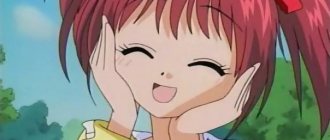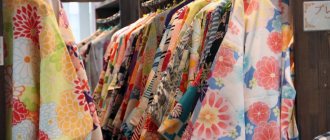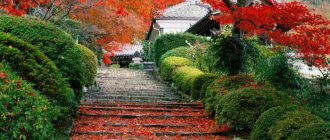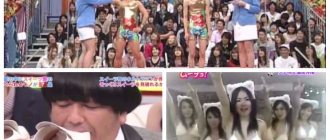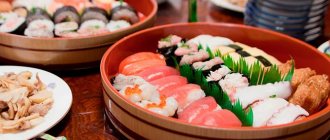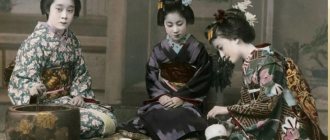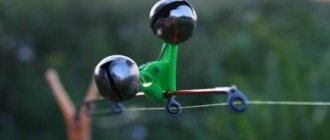The most popular
The Land of the Rising Sun is special, unlike others. Therefore, the national Japanese musical instrument is also unusual. It is called shamisen. This is a Japanese plucked musical instrument. It has three strings attached to a wooden frame covered with the skin of a cat, snake or dog. The instrument is covered on both sides. Its length is 100 centimeters. The shamisen is played using a special device - a plectrum, which replaces the previously used mediator. Performers with high skill can extract special sounds from this instrument - savari. In addition, shamisen differ from each other in pitch and timbre. Storytellers and singers accompanied themselves during performances by playing this instrument. The appearance of this instrument dates back to the mid-16th century. The shamisen is played in three different styles. Minyo - performance of folk songs. Katari-mono - playing along with the storyteller. Uta-mono is a song style used to accompany Kabuki theatrical performances. Geishas in the Tokugawa era had to be able to play the shamisen.
Shakuhachi
This bamboo pipe. It was borrowed from the Chinese and subsequently became so loved in the land of the rising sun that it became a folk instrument.
Its name indicates its dimensions: shaku translates as “foot”, hati means the number 8. Eight feet in terms of the usual measure of length is a little more than half a meter.
Shakuhachi
The sounds of the shakuhachi are simple, beautiful and induce a calm, meditative state. There are about twenty different types of Japanese flute.
There are three main gaming styles:
- tozan - named after the founder Nakao Tozan;
- kinko - as a memory of Kurosawa Kinko, who invented it;
- mean - in honor of the Kyoto temple Meanji.
Almost a harp
There are other Japanese stringed musical instruments. There is a large group united by one name - biwa. These Japanese musical instruments are made from mulberry wood and the strings are made from silk. The earliest mentions of them are found in documents dating back to the 8th century. There are several varieties of these instruments. They have an elongated, almond-shaped body, strings, and are played using a plectrum. But there are a number of features that make it possible to distinguish them from each other. This is not only the appearance and sound, but also a different purpose. Gakubiva was used to create special music - gagaku. The size of this instrument is 122*41 cm. It has 4 strings. A wide black leather tape is glued across the body. It protects him from the blows of the plectrum. For court orchestras, a five-string version was used. But over time they stopped using it. Blind monks played a four-string moso biwa. In order to play along during “The Tale of the House of Tara,” they took a special heike biwa with 4 strings and 5 frets. Satsuma-biwa has an extended range. This instrument has 4 strings, 4 high frets, and uses the largest plectrum to play. It was most often used in Satsuma Province during the Edo period. And in Meiji times they played chikuzen-biwa. It could have 4 or 5 frets, depending on this the playing style changed.
Going back centuries. Music of Ancient Japan
About the music of Japan from the ancient periods Jomon ((縄文時代) - from 13,000 BC to 300 BC) and Yayoi ((弥生時代) - 300 BC - 250 AD . BC) very little is known, but archaeologists have found ritual figurines of musicians, indicating the important role of music in the early stages of the formation of Japanese society and culture. Late Yayoi was marked by the construction of large funerary structures. There are also supposedly many powerful clans that existed during this period, which gradually led to the dominance of the Yamato clan. The state they built used the language, religion and legal system of the Asian continent, and resulted in the high development of the imperial court as a political and cultural center during the Nara (645-710) and Heian (794-1185) periods. Even as the political power of the imperial court diminished, the imperial court nevertheless continued to maintain its traditions, many of which continue to exist to this day.
What little remains of the prehistoric period are a few songs, legends and rituals recorded in the first written chronicles of the Japanese state, the Kojiki (古事記/Kojiki) and the Nihon Shoki (日本書紀/Nihon Shoki). During the reign of Emperor Tenmu (673-686) - the period when the "Records of Ancient Deeds" (Kojiki) were compiled - these songs were already a tradition of the imperial court.
From the earliest stages of Japanese history, poetry and song have been very significant cultural components and the clear distinction between these two cultural forms is not entirely clear. The word "uta"
(歌) could mean both “song” and “poem” in ancient times. What is known is that poetry has almost always been presented as the action of “reading (singing) out loud.”
During the Nara (710–794) and Heian (794–1185) periods, poetic standards were established in the oldest imperial anthologies of Japanese poetry, Manyoshu (万葉集/Collection of Myriad Leaves) and Kokinshu (Collection of Old and New Songs of Japan). The stanza forms, versification, and use of poetic imagery developed during this period are reflected in virtually all Japanese music and have persisted to this day.
Poetry and music also took center stage in the prose works of the time. In The Tale of Genji (author Murasaki Shikibu, 1024), for example, most of the dialogues are constructed in poetic song form. Dancing accompanied by Gagaku music and musical instruments such as the koto (箏/Japanese plucked instrument), flute (笛), and biwa (琵琶/ the common name for the national Japanese lute instrument) form the cultural backdrop of this classic novel.
Note that most of the official Japanese culture of the time used Chinese, but Chinese and Japanese are very different. Chinese is monosyllabic and has tones, while Japanese has long polysyllabic words (with many syllables) and does not have a tonal system. Chinese was used in its original pronunciation and with various ways to read its Japanese words, but native Japanese literature of the Heian period and especially Japanese poetry, according to the materials of the site indicated above, tried to avoid words of Chinese origin as much as possible.
Not just music
Japanese folk musical instruments resemble drums, flutes and harps in appearance. All drums in this country are usually called taiko, which means big drum. They appeared in Japan in the 3rd-4th centuries. It is believed that their homeland is Korea and China. Japanese drums are divided into two groups. Belonging to one of them, you can customize, for this there are cords and screws. They are called shime-daiko. Those belonging to the second group, byo-daiko, have a rigid membrane secured with nails, which does not allow changing the sound of the instrument. Instrument bodies are hollowed out from a single piece of hardwood. Drums are used in the performance of classical music, but are also widely used among people. In Japan, it is believed that playing them develops coordination, fortitude and discipline. Besides, drumming is a whole performance. Therefore, there are musical ensembles whose members play only these instruments. A small hourglass-shaped drum is called a tsuzumi. It is adjusted using cords that are passed through membranes on both sides. The membranes should be wet when playing, this ensures better sound.
Report: Japanese music
The history of the development of Japanese music is clearly divided into several stages, corresponding to important periods of economic and cultural development of Japan. During archaeological excavations on the Japanese islands, an ocarina and a stone whistle were discovered. These instruments date back to the Jomon period. The use of ceramic vessels as percussion instruments is not excluded. The society of that time is characterized as a society of fishermen, gatherers and hunters, whose spiritual life was dominated by magic. Music, naturally, was part of magical rituals.
During the Choi period, music accompanied funerals and agricultural rites.
The strengthening of the processes of ethnic unification, assimilation and integration led to the formation of a state during the Confun period (3rd - early 5th century). The formation of Yamato, the mythological system of Shinto, as well as the folklore mysteries of the Kagura, which synthesized various ritual songs and dances.
The palace musical culture of the medieval states of the continent reflected a different musical level of thinking and was closely connected with Buddhist and Confucian doctrines.
In 710, at the court of the Japanese emperor, a special service was formed in charge of matters of palace ceremonial and accompanying music - gagakuryo. One of the functions of gagakuryo was to introduce the feudal aristocracy to the musical culture of the continent and, first of all, to the palace traditions of medieval states.
With the advent of modern times, almost the entire variety of music of the imperial court was united by the term gagaku. Currently, training in the traditions of gagaku, as one of the types of national musical classics, is carried out at the Tokyo University of Arts and the State Conservatory, and there are societies of gagaku lovers.
In urban culture, along with palace music, modern songs performed by professional singers and dancers, entertaining scenes, and dengaku performances, closely associated with agricultural rituals, were popular among various segments of the population.
During the Ashigaka period (1336-1573), various musical theater traditions began to be synthesized into a unique cultural complex - noo theater. Folklore performances were held at churches and were of an illustrative and narrative nature.
After the fall of the Tokugawa shogunate, noo theater became public.
At the turn of the 16th-17th centuries. a puppet theater arose.
After the bourgeois Meiji revolution, an active process of assimilation of European musical culture began, for which traditional institutions were initially used, in particular the gagaku department. However, already in 1872, teaching singing in the European style was introduced in schools, and in 1887 the Tokyo Music School was opened, where teaching was carried out with the help of cultural figures invited from Europe and America. The concert activities of a number of European performers began. Since the 20th century, Japanese composers began to become active.
After the end of the First World War, the artistic principles of various European movements were mastered, and elements of traditional Japanese music were used. The largest organization of Japanese musicians was the Japan League of Contemporary Composers.
After the end of World War II, Japanese musicians quickly mastered various types of performing and composing techniques. In 1946, the Japan League of Contemporary Composers was re-established. Orchestras and opera troupes were organized, new music schools and colleges were opened, and many small associations of composers arose. Compositions were created in the traditions of European music of the 19th century. 20th centuries and dodecaphonic technique. In 1955, an electronic music studio opened. Contemporary music festivals have begun.
Japanese pipe
A bamboo flute called shakuhachi also came to Japan from China. Its name accurately characterizes its length. "Shaku" is a foot, and "hachi" is eight. By our standards, 54.5 centimeters. Over time, they learned to make it in this country. Today, these Japanese musical instruments are widely used. In total there are about 20 species. This flute is a favorite of the people for the beauty of its sound and ease of manufacture. The original sounds that musicians extract from it are often used to write meditation music.
Unusual beauty
Japanese musical instruments resembling a harp are koto. They were introduced to Japan in the first millennium. They played the koto in the imperial palace. All aristocrats had to own it. Therefore, playing the koto was included in the educational program of the elite segments of society. In order to extract sound from this instrument, the musician uses false nails. One for the thumb, the second for the index and the third for the middle finger of the right hand. The frets are pre-tuned using bridges. There are two types of koto. A large one, 1.8-2 meters long, with 1 or more strings, is used for playing in an orchestra. It's called "co". For a solo instrument, a smaller koto is chosen, 1 meter long with seven strings. The most popular piece of music for this instrument is Rokudan no Shirabe, written by the blind man Yatsuhashi Kenge in the 17th century.
Japanese musical instruments
This time we will not talk about Japanese performers, but about traditional musical instruments. This information will be useful and educational primarily for those who are interested in music.
Biwa is the national Japanese instrument. It belongs to the family called “lutes”. For a very long time in the Land of the Rising Sun, two varieties of biwa became widely known - gakubiwa and gogenbiwa.
The gakubiwa is a pear-shaped instrument with a short neck on which 4 frets are located and a head bent back. This head in turn has four pegs for tuning four strings made of silk. The tuning is consistent with the six modes of classical Japanese gagaku music. The dimensions of the gakubiwa are as follows: length - 122 cm and width - 41 cm. The sound is produced using a plectrum (18 cm). To protect the soundboard from plectrum impacts, a wide leather tape, usually black, is glued across its central part.
Later, other varieties of biwa appeared (satsumabiwa, sasabiva, heikebiwa). Most often they were used to accompany the singing of Buddhist parables and war tales.
Koto is a Japanese plucked musical instrument. The koto, along with the shakuhachi and hayashi flutes, the tsuzumi drum, and the shamisen lute, are among the traditional musical instruments of Japan. Externally, the koto is very similar to our harp.
This instrument is played using false fingernails. They are worn on the thumb, index and middle fingers of the right hand. Immediately before the start of the game, modes and keys are adjusted using string stands (bridges). Koto playing is one of the traditional Japanese national arts.
The Shakuhachi is a longitudinal bamboo flute. It came to Japan from China during the Nara period. The Chinese name for the flute is xiao (dongxiao).
Today there are about 20 varieties of shakuhachi. The standard length of a shakuhachi is 1.8 Japanese feet or 54.5 cm. This musical instrument received its Japanese name based on its length (in Japanese, “shaku” means “foot”, and “hachi” means “eight”) .
Shakuhachi has a special, unique sound. The performer can change the sound made by the feyta at will, giving the melody an unusual and bewitching sound. This property of the flute was used by Zen masters to perform meditative melodies (suizen practice). In order to produce sound, the musician places the upper end of the flute to his lips and directs the air flow towards the wedge.
For today, the acquaintance with traditional Japanese musical instruments is complete. And finally, I suggest you enjoy their pleasant sound.
<Japanese rock band from Innoshima Porno Graffitti
Will X JAPAN be going on a world tour in 2014?>
A relative of the oboe
What other Japanese musical instruments are there? Brass is a cunning guy. This instrument is considered the progenitor of the oboe. It is made from bamboo and decorated with cherry tree bark. It is small in size and has a sound range of only one octave. Externally, the khitirik resembles a flute. The body has holes for sound extraction, as well as a ring for adjusting tone and volume.
And there is an unusual musical instrument in Japan that anyone can play. It is not necessary to have an ear for music. This will happen naturally when you wash your hands. We are talking about suikinkutsu.
Second half of the 70s. Protest music and awareness of problems.
In 1978, the Sex Pistols emerged in England with a nonconformist agenda and became idols for young people around the world. Most Japanese groups copied the style and presentation of the British, but there were those who tried to create their own projects, unlike Western ones.
Friction
Friction were one of the first to appear on the emerging rock scene in Japan. Before creating the group "Reck" and Tatsuya Nakamura lived for several years in the USA, where they played in the bands of Lydia Lynch and James Chance. They later returned to Japan and created the first punk rock band in the country. In 1978, guitarist Tsunematsu Masatoshi joined them. The team's first album, "Atsureki" (Japanese for Friction), was produced by Yellow Magic Orchestra keyboardist Ryuichi Sakamoto. Friction copied the style of American punks, but unlike the Americans, the Japanese made technically high-quality music. They knew how to play the instruments, the sound quality and mixing were at a higher level, and the musicians themselves behaved quite restrained on stage. And they looked more like rock and rollers from the 60s - multi-colored collared shirts, trousers and combed-back hair.
Inu
The Inu project (from Japanese dog) existed for several years and released only two albums. First album—Ushiwokamaru Name Tottarado Tsuitaru Zo! was recorded during semi-garage performances. Band leader Machizu Machida noted in an interview that critics considered the album's "raw" and "dirty" sound to be an avant-garde experiment, although in fact the musicians simply lacked skill in playing musical instruments. Typical Western-style punk rock - inarticulate screams, out-of-tune guitars and low sound quality - was complemented by instruments unusual for the genre - harmonica, bagpipes and electronic equipment, which was often used to record techno. Machida inserted various effects into the recordings—soldiers marching, gunshots, groans, and random lines from films—and also bleeped out individual words. A few years after the first, the band's only studio album, Mushi Kuuna, was released! This time the musicians took a responsible approach to recording and mixing the album. The sound became much clearer, the songs had a rhythm and theme. Despite its punk bent, the album was uneven. If in the first songs you can clearly hear a catchy pop motif, energetic percussion and rhythm section, then in the middle the music slows down, the guitars begin to grind, distortion drowns out Machida’s shouts, and the drums monotonously beat out the same rhythm. Towards the end of the album, the energetic, cleaner sound returns, the beat speeds up and the vocals become an incoherent drone.
Phew
One of the key figures of the Japanese avant-garde scene is Phew. The performer began her career in 1978 in Aunt Sally, a group that played a mixture of punk rock and psychedelia. Aunt Sally existed for only two years, having worked with famous experimental groups from Germany - DAF, Einstürzende Neubauten and Can. Rhythmic, monotonous vocals and melodic “childish” sounds of the harpsichord with an introductory drum march gave way to a fast cyclical motif, somewhat reminiscent of early Pink Floyd, and then turned into an avant-garde cacophony with a ragged rhythm and screaming vocals. In 1981, Phew began her solo career and released the improvisational album Phew that same year. Holger Szukay and Jaki Liebetsai from the German Can took part in the creation. The album was recorded and mixed in the studio of famous producer Konrad Planck in Cologne. The result is a minimalist post-punk album with an abundance of creaky electronic sounds, simple percussion parts with drawn-out monotonous vocals. Like many albums of that time, Phew was rediscovered relatively recently and received high praise from contemporary critics.
Jun Togawa
Jun Togawa was born in a country whose society rejected the past and did not allow open discussion of the problems of the present. Through music, Togawa sensitized audiences to two major taboo topics in Japan: historical revisionism and sexism. She began to study music when it became clear that changes were expected in Japanese society - Emperor Hirohito's health was deteriorating, the Showa era was coming to an end, and post-modernity was replacing modernity in Japanese culture.
In 1981, Jun joined Guernica, an avant-garde electro-cabaret group. The group members dressed in accordance with the fashion of the 40s: hair combed to one side, elegant suits for men and feminine dresses, jewelry and neat hair for Jun. The album covers were reminiscent of propaganda posters of the 30s - couples in love stand against the backdrop of large factories and look into the clear blue sky, dreaming of a strong, modernized Japan. The music of Guernica appealed to nostalgia for pre-war times while combining elements of popular German music from the first half of the 20th century.
Guernica criticized the state's attempts to rewrite history. The new state idea that “good conquered evil” - a new democracy overcame military militarism and renewed Japan - was supposed to replace the utopia of a powerful modernized empire. Through propaganda, the state tried to impose new ideas of national identity and teach the Japanese to perceive the past as an accidental misunderstanding that should now be forgotten.
The 1980s marked the beginning of the Golden Age of Japanese pop music. The most commercially successful projects were performers of kawai shojo (Japanese for “sweet girl”) - a sexualized image of an infantile girl, which was often used by "aidoru" - pop idols of the time. Jun herself considered herself the antipode of this image. A light, uplifting melody was superimposed on dark, nihilistic lyrics - gender inequality, menstruation, child abuse and cruelty were the leitmotif of Togawa's songs. The performer herself often used the image of an insect, sang on stage in a dragonfly costume and noted in an interview her love for parasites and worms, which for her personified freedom from human influence.
Underground melody
Translated, this word means “cave of the water koto.” Previously, such devices were installed at springs, but in the modern world they can be found in parks, shops, and residential premises. The Japanese love the sounds of suikinkutsu, and although the sounds are made not by man, but by nature, it is still people who tune it. It is a jug buried in the ground, turned upside down. Water enters the jug through a hole in the bottom, giving birth to simple melodies. Ceramic jugs are best, although metal ones are also used. Those who hear sounds coming from underground for the first time are amazed when they learn how this instrument actually works.
Japan is an unusual country. Therefore, the Japanese musical instruments, photos of which are presented in the article, are distinguished by their originality. Of course, the best thing is not to look at the images, but to hear how they sound.
